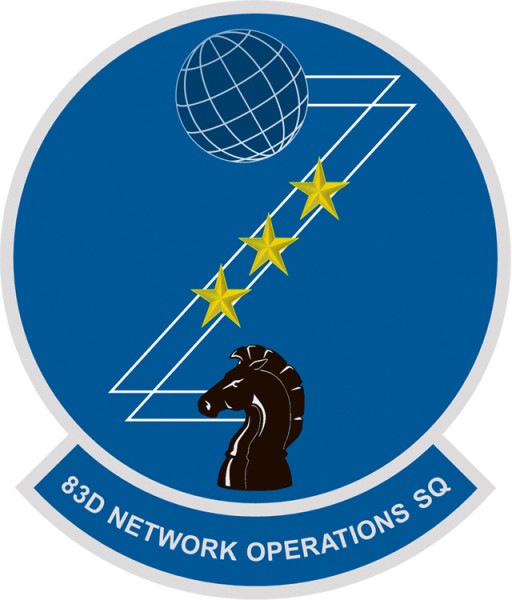
This is the 83rd Network Operations Squadron Detachment 4 patch. The 83rd NOS uses their weapon system, known as the cyber security and control system, to ensure 24-hour network operations and management functions and enable key enterprise services and defensive operations within the Air Force’s networks. The CSCS is one of seven Air Force cyber weapon systems and is operated every day at Ramstein.
On any given day, there are threats from the virtual domain which could wreak havoc in the physical world. To help defend against this invisible enemy, Airmen with the 83rd Network Operations Squadron Detachment 4 posess a weapon system that brings airpower to the cyber war.
Stationed at Ramstein, approximately 190 Airmen within the 83rd NOS are charged with defending more than 30,000 personnel across Europe. However, with their cyber security and control system, also known as CSCS, the support they provide can reach much further.
“Prior to the CSCS, our support was limited to the U.S. Air Forces in Europe theater,” said Capt. Nathan Waters, 83rd NOS director of operations. “Now that we have this capability, the backing we can provide extends far past Europe and reaches all over the world.”
Though their focus is primarily U.S. Air Forces in Europe’s networks, if necessary, they are able to work with three other network operation units located across the globe to surge cyber capabilities where required.
The core services they provide include telephone communications, cyber vulnerability scanning, digital patches and various other network monitoring tools.
“The services we provide are the infrastructure that all communication goes through between geographically separated installations,” Waters said. “By utilizing the CSCS, we can ensure 24-hour network operations (and) management functions and enable key enterprise services and defensive operations within (USAFE and the Air Forces networks).”
As the number of customers increase, so does the demand for exceptional Airmen who can accomplish the cyber mission.
“We used to all work in the same building doing support and maintenance, however we thought there was a better way to improve efficiency,” said Master Sgt. Joseph Friesenhahn, 83rd NOS assistant director of operations. “In the end we created two groups which were inspired by the flying community: one to plan operations and the second to carry out the tasks. While this required more manpower, I believe leadership had an interest which is why we have grown so quickly.”
While the restructure has its benefits, the schedule can be rigorous, Friesenhahn noted.
“The rotation is 16 months and is broken up into four-month cycles of conducting operations and training,” Friesenhahn said. “Due to our operation, we are considered deployed in place, which ensures our cycle is not hindered; otherwise, the USAFE mission may be degraded.”
Cyber warfare is a battle raged on a field untouched by traditional weapons, however the 83rd NOS Airmen stay prepared with sharp minds and keen skills ready to defend against the invisible threat.







